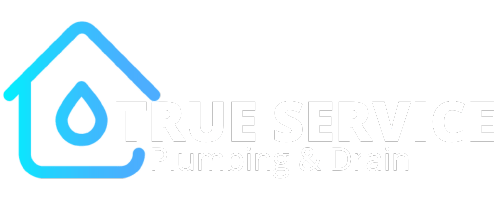At what temperature do pipes burst? It’s a question every homeowner should ask before winter arrives.
The reality is, when temperatures drop too low, unprotected pipes can freeze and burst, leading to significant water damage and expensive repairs.
Understanding the temperature threshold for pipe bursts, the science behind it, and the steps you can take to prevent it can save you thousands of dollars in potential damage.
This guide will walk you through everything you need to know, from recognizing early warning signs to taking proactive measures to protect your home.
What Temperature Do Pipes Burst?
Water inside pipes begins to freeze at 32°F (0°C). However, not all frozen pipes burst immediately.
The real danger occurs when temperatures drop to around 20°F (-7°C) or lower.
Factors That Influence Pipe Bursts
- Exposure to cold – Pipes in unheated areas, such as basements, attics, crawl spaces, and exterior walls, are at higher risk.
- Pipe material – Copper and PVC pipes tend to freeze and burst more easily than PEX piping, which is more flexible.
- Insulation quality – Poorly insulated pipes are more susceptible to freezing.
- Wind chill factor – Cold drafts and wind can lower temperatures around pipes faster than still air.
Taking these factors into account, homeowners should start winterizing their plumbing before temperatures approach 20°F (-7°C) to reduce the risk of burst pipes.
Why Do Pipes Burst in Freezing Temperatures?
The science behind burst pipes is simple. When water freezes, it expands by about 9% in volume.
This expansion creates pressure inside the pipe, which can eventually lead to cracks or ruptures.
How Pressure Leads to Pipe Bursts
- Water inside the pipe freezes.
- Ice forms and blocks water flow, creating pressure buildup.
- If pressure exceeds the pipe’s capacity, it bursts at its weakest point.
- Once the ice thaws, water escapes through the rupture, causing flooding.
High water pressure in plumbing systems can increase the likelihood of a pipe burst. That’s why it’s essential to relieve pressure by keeping faucets slightly open in freezing weather.
Signs That a Pipe is About to Burst
Recognizing early warning signs can prevent disaster. Watch for these red flags:
- Frost buildup on pipes – If you notice ice forming on exposed pipes, they could be freezing internally.
- Odd noises in plumbing – Bubbling, whistling, or banging sounds could indicate pressure buildup inside pipes.
- Slow or no water flow – If faucets stop working in cold weather, your pipes may already be frozen.
- Drop in water pressure – A sudden decrease in pressure might signal a blockage due to ice formation.
If you notice any of these signs, act fast to prevent a costly burst.
How to Prevent Pipes from Freezing and Bursting
Taking preventive steps before temperatures plummet can save you from major plumbing headaches. Here’s how to protect your pipes this winter.
A. Insulate and Heat Exposed Pipes
- Use foam pipe insulation on exposed pipes in unheated areas.
- Apply heat tape or heating cables for extra protection.
- Keep the thermostat set to at least 55°F (12°C), even when away.
- Open cabinet doors under sinks to allow warm air circulation.
B. Keep Water Flowing
- Let faucets drip slightly to prevent pressure buildup.
- Drain and disconnect outdoor hoses and shut off exterior faucets.
- Use a space heater in vulnerable areas like basements and garages.
C. Long-Term Plumbing Solutions
- Upgrade to PEX pipes, which are more flexible and resistant to bursting.
- Install a pressure relief valve to lower the risk of excessive pressure.
- Schedule a professional plumbing inspection to check for vulnerabilities.
What to Do If a Pipe Bursts in Your Home
Despite your best efforts, a pipe may still burst. Here’s what to do immediately:
- Shut off the main water supply to stop further flooding.
- Turn on faucets to relieve remaining pressure in the system.
- Locate the burst pipe and contain the leak using a pipe clamp or plumber’s tape.
- Mop up excess water and use fans to dry the area to prevent mold.
- Call a professional plumber to repair or replace the damaged pipe.
Taking these steps can minimize damage and save your home from extensive repairs.
How Much Damage Can a Burst Pipe Cause?
A single burst pipe can spill hundreds of gallons of water per hour, causing extensive damage:
- Ruined drywall and flooring from prolonged water exposure.
- Structural issues if water seeps into walls and ceilings.
- Mold growth due to lingering moisture.
- Expensive plumbing repairs if the issue isn’t addressed quickly.
The cost of fixing a burst pipe can range from $500 to over $5,000, depending on the extent of the damage.
Prevention is always the most cost-effective solution.
Conclusion
Frozen pipes can lead to expensive repairs and significant water damage, but with the right precautions, you can avoid disaster.
Insulating pipes, keeping water flowing, and monitoring your plumbing during cold spells will go a long way in protecting your home.
If you suspect a frozen or burst pipe, acting fast is crucial.
Whether you need professional pipe insulation, emergency repairs, or a plumbing inspection, True Service Plumbing is here to help.
Emergency Pipe Repair and Winter Plumbing Services with True Service Plumbing
When it comes to burst pipe repair and winter plumbing protection in Toronto and the GTA, True Service Plumbing is the trusted choice for both residential and commercial properties.
Our expert plumbers provide efficient solutions to prevent and repair frozen pipes, ensuring your home stays safe from water damage.
Worried about freezing temperatures affecting your plumbing? Let our professionals inspect and safeguard your pipes before disaster strikes.
Don’t wait until it’s too late. Contact True Service Plumbing today to protect your home from burst pipes and costly water damage!


